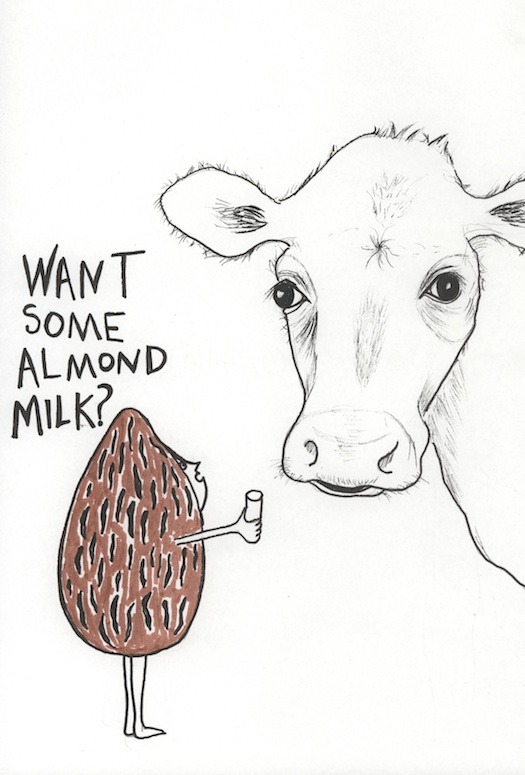
By Leslie Goldberg
Since Gov. Jerry Brown has announced that the little people now should cut back their water consumption by 25 percent, the folks in the animal food industry must be popping the champagne corks. Not only has Brown declined to ask agriculture, including animal agriculture, to cut back, it looks to me like none of the major American media outlets are focusing on livestock and calling it out for the mega-sponge it is.
Instead, the press recently has managed to suggest the idea it’s fruits and vegetables that are the culprits and if we want to do right we should not only turn off the sprinklers but ditch the almond milk and maybe skip the salad. Ok, ok, we should definitely turn off the sprinklers and phase out those oversized spa bathtubs, I agree. But there has been scarcely a hiccup about animal ag with a few exceptions and that’s a serious bummer.
Animal agriculture deserves more than a hiccup! And hamburgers are costing us way more than $1 a piece. Forty-seven percent of California’s water is used for meat and dairy products, according to a study by the Pacific Institute.
California’s biggest crop happens to be not almonds, tomatoes or lettuce. It’s alfalfa. Michael Pollan said during an interview with phys.org, that about 25 percent of our water is going to raise alfalfa, which is primarily for animal feed – not avocado sandwiches.
And possibly the worst of it is that a lot of that alfalfa is being shipped from California to Asia and the Middle East, areas that have started to glom onto the West’s genius animal-food-heavy diet.
“A hundred billion gallons of water per year is being exported in the form of alfalfa from California,” said Professor Robert Glennon from Arizona College of Law, who was quoted in a BBC article. “It’s a huge amount. It’s enough for a year’s supply of water for a million families – it’s a lot of water, particularly when you’re looking at the dreadful drought throughout the south-west.”
So the animal agricultural water footprint is, yes, the animals themselves, but also growing feed crops for not just California’s meat and dairy industry but that of China and the Middle East.
“Wonderful,” I sarcastically write.
However, I think there may be hope. I’m one of those pesky lefties who believes almost nothing happens in this country unless the mega-corporations want it to happen. Somehow I can’t imagine all the non-animal agricultural corporations standing by and watching this one economic sector, animal agriculture, take us down.
And of course, as consumers of these animal products, we can do something too: not be consumers of animal products. “Changing one’s diet to replace 50 percent of animal products with edible plants like legumes, nuts and tubers results in a 30 percent reduction in an individual’s food-related water footprint,” wrote James McWilliams in a New York Times op ed piece back in early March. “Going vegetarian, a better option in many respects, reduces that water footprint by almost 60 percent.”
It’s time, New York Times, to, at the very least, run another McWilliams piece.
– A Vicious Vegan blog post –

